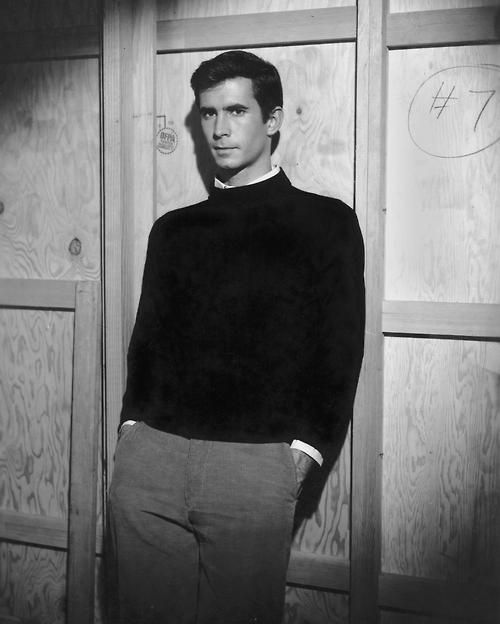People Just Come and Go
This scene is when Arbogast finally makes it at the motel and starts to talk with Norman Bates about Marion Crane.
 Norman in this scene can be scene as very nervous as he stutters a multitude of times and he nervously chews his candy. He knows of the deed that his mother has done and he is nervous while trying to cover for her.
Norman in this scene can be scene as very nervous as he stutters a multitude of times and he nervously chews his candy. He knows of the deed that his mother has done and he is nervous while trying to cover for her.
Arbogast seems to be the antagonist of the conversation. One could tell he's very good at his job seeing as he manipulates Norman to expose a lot of information that was not mentioned. He has his ways with words and has a very good memory seeing as he build from everything that Norman says and contradicts Norman's statements.
 The camera angles in this scene are mostly the same except for some parts like the picture in the left. It stays at the same angle as when he was facing the camera. It shows his anxiousness as this angle is not a very normal camera placement.
The camera angles in this scene are mostly the same except for some parts like the picture in the left. It stays at the same angle as when he was facing the camera. It shows his anxiousness as this angle is not a very normal camera placement.
The area of the scene takes place in the office of Norman Bates. It feels like a very small somehwat cramped space which increases the tension between the two characters and the nervousness and uneasyness of Norman Bates. The small area also creates an authetic feel of a small motel and keeps true to its image.
The shadows and lighting are most important for this scene because color is mostly non-existent because it is black and white. The lighting highlights the things that the film wants us to focus to such as this photo. The shadow somewhat covers Arbogast's hand and a light is focused on Marion's face to show us what to focus to.
In this scene, Norman was just asked if Marion was still in the motel and giggles while saying no. The slightly jokish laugh shows some dramatic irony as we know what happened to Marion but Arbogast does not know the whole story. The place of that laugh was perfect as it gave out a small glimpse of the psycho side of Norman Bates.
The shadows and lighting are most important for this scene because color is mostly non-existent because it is black and white. The lighting highlights the things that the film wants us to focus to such as this photo. The shadow somewhat covers Arbogast's hand and a light is focused on Marion's face to show us what to focus to.
In this scene, Norman was just asked if Marion was still in the motel and giggles while saying no. The slightly jokish laugh shows some dramatic irony as we know what happened to Marion but Arbogast does not know the whole story. The place of that laugh was perfect as it gave out a small glimpse of the psycho side of Norman Bates.









.jpg/215px-Psycho_(1960).jpg)





